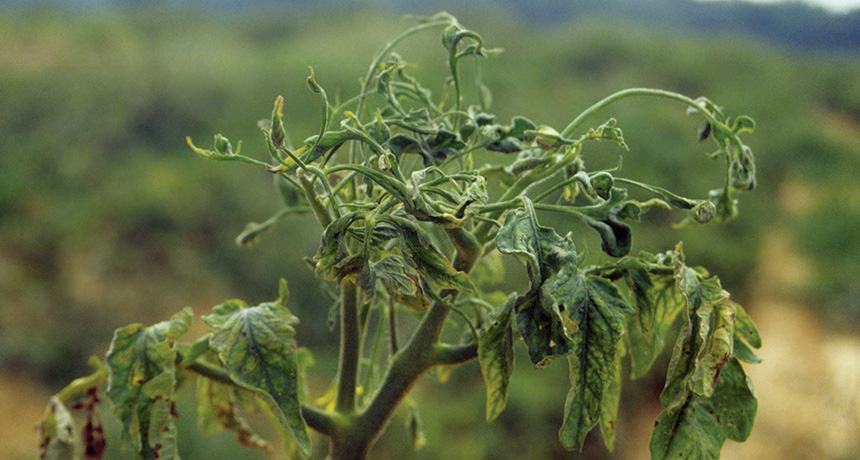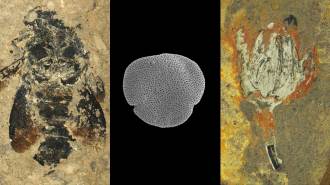
VIRAL VICTORY Plants infected with cucumber mosaic virus, like this tomato plant, are often stunted and blemished. But the virus appears to help the sick plants reproduce by making them more attractive to bees.
Edward Sikora/Auburn University, Bugwood.org







